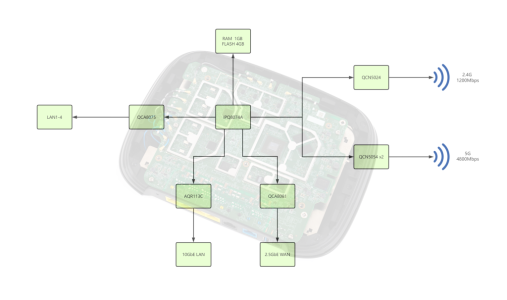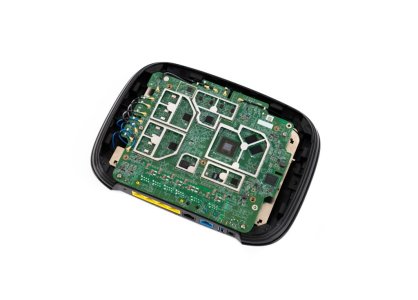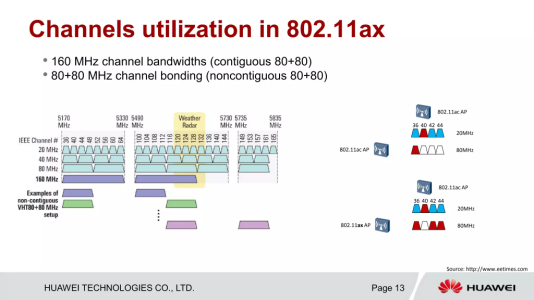This router is advertised as AX6000, 1.2Gbps+4.8Gbps.
What am I missing here, everyone says that when using 160MHz the router becomes only 4x4.
I tought that enabeling 160MHz disables one chip, but the math doesn't add up, since the network is shown as 9600Mbps/8 streams. @
avtella , @
thiggins
80+80 means the 8 channels can be contiguous or non-contiguous ( split into two groups of 4)
This is what confuses me, if this router is indeed using 80+80, how is my intel ax210 able to connect with a phy speed of 2.4Gbps?
I'm trying to understand how are the radios working when enabeling 160MHz?
Your router is not using 80+80 if the AX210 is connecting at 2.4, that's what I'm trying to tell you. It is using regular old contiguous 160 and overlapping DFS. You should be able to see in the router what the control channel and extension channels are. I've never seen 80+80 used to describe 8 contiguous channels, that is simply 160.
The AX210 will connect at 2.4Gbit when using 160mhz (8 channels, 2 streams). If the router is advertising that it is capable of 160x8, the intel card can see that, but it can't use it.
I'm looking at the spec for that chip configuration and it basically is using two 4 stream 80mhz radios. This means when they are combined, you can either run 80 mhz 8 stream, or 160mhz 4 stream. Either way, you're limited to 4.8G. I'm guessing that's where the 80+80 confusion is coming from, that it is combining two 80mhz chips, but that is just 160, not 80+80.
It may be able to run in 80+80 mode, but that's a totally separate thing from just running two chips to make up 160mhz, basically ignore that for this discussion. Even in 80+80 mode you'd be running 4 streams or 4.8G max (and 80+80 performance often suffers more than straight 160).
Right now you're running plain old 160mhz 2 stream and that's all the AX210 can handle. Inssider is seeing that it is capable of 160 and 8 streams (separately), and just calculating the value incorrectly.
I see where you got the 80+80 thing from, dongknowstech - I hate to say it but from what i've seen, dong doesn't really know tech, he just knows how to get referral payments from amazon.
Nothing much really supports true 80+80 mode, it isn't really being actively developed anymore.
The specs for both the Zyxel and Netgear are a bit misleading. They do cover their butt by saying 4.8G max, but saying 8 streams and 160mhz are supported is somewhat false.
Long story short, that router is capable of 4.8 gigs, and you can either run it 160mhz 4 stream or 80mhz 8 stream depending what you have for clients. In your case, 160x4 stream makes sense since the intel card can only use 2 streams so you want as much bandwidth on those two streams as you can get.
Of course 160mhz can be problematic if you have radar nearby, and it is reduced range and will often fall to 80 or even 40. 80x2 may prove to be better/more stable, and 1.2 gigs (800-900M actual throughput) should be plenty, any more than that you should be wired anyway.





